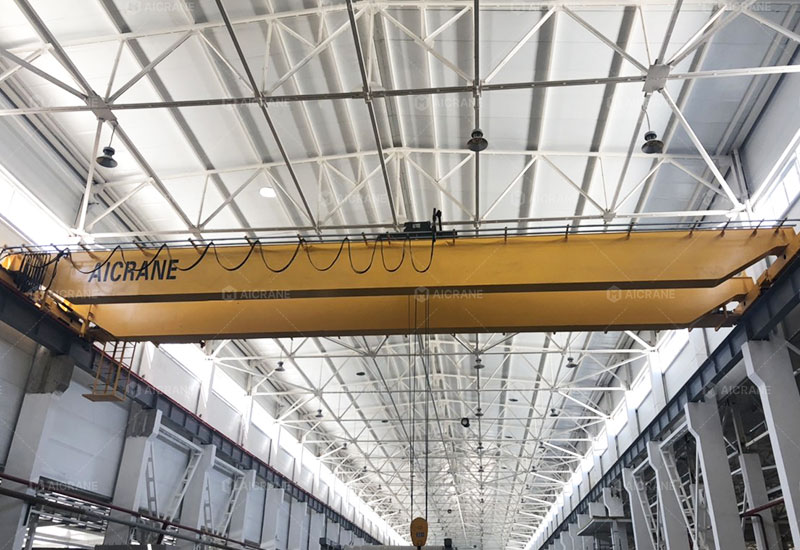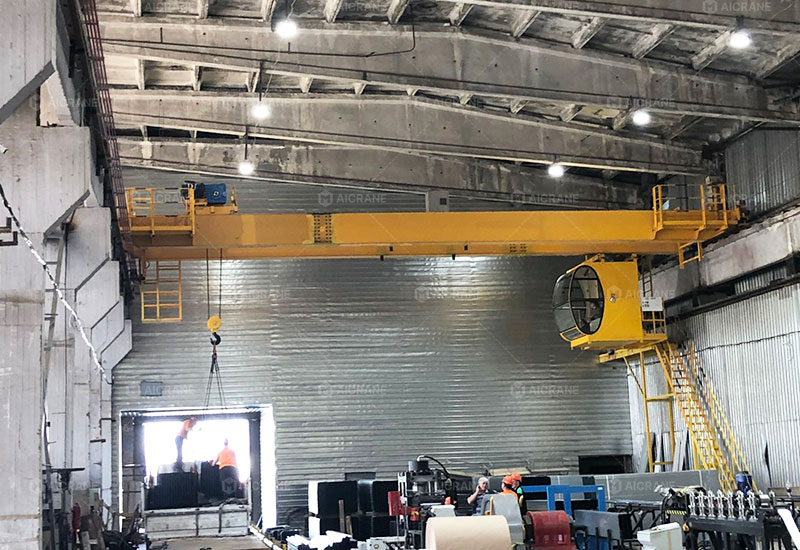In modern steel plate processing halls, efficiency, safety, and precision handling of heavy steel plates are paramount. The use of overhead cranes is a standard solution to lift, transport, and position steel plates within the facility. However, many steel processing plants require multiple overhead cranes to work simultaneously in the same hall, often sharing the same runway or operating zones. Without proper coordination, this multi-crane operation can lead to collisions, operational delays, and safety risks.
To overcome these challenges, installing a Multi Overhead Crane Coordination System (MOCCS) has become an essential step toward optimizing production efficiency, maximizing crane utilization, and ensuring workplace safety in steel plate processing halls. This article explores the importance of multi-crane coordination, key components of such systems, installation considerations, and benefits specific to steel plate processing.

Why Multi Overhead Crane Coordination Is Necessary
1. Complex Operation Environment
Steel plate processing halls often span large areas, equipped with multiple overhead eot cranes to handle heavy and large steel plates. These cranes operate on parallel runways or intersecting paths, with overlapping work zones. Coordinating their movement is critical to avoid operational conflicts.
2. Risk of Crane Collision
Without coordination, two cranes operating simultaneously can collide, causing costly damage to the cranes, halted production, and potential injury to workers. Such collisions can also damage expensive steel plates, resulting in material loss.
3. Maximizing Productivity
Multi-crane coordination enables smooth, uninterrupted operations by intelligently sequencing crane movement, minimizing waiting time, and optimizing workflow. It allows cranes to share work zones and materials more efficiently.
4. Enhancing Safety
Worker safety is a top priority. The coordination system monitors crane positions in real-time and can automatically prevent cranes from entering unsafe proximity or conflicting paths, greatly reducing accident risks.

Key Components of a Multi Overhead Crane Coordination System
1. Centralized Control System
At the heart of the MOCCS is a centralized control unit that receives real-time data from each overhead crane’s sensors and control modules. It processes this data to monitor crane locations, speeds, and load conditions.
2. Positioning and Detection Sensors
High-accuracy sensors such as laser rangefinders, RFID tags, or encoder-based position detectors are installed on cranes and runways to provide continuous position feedback.
3. Communication Network
A reliable wired or wireless communication network connects all workshop overhead cranes and the central control unit. This network ensures real-time data exchange to enable synchronized operation.
4. Collision Avoidance Algorithms
Advanced software algorithms analyze crane positions and planned trajectories to detect potential conflicts. The system can automatically adjust crane speeds, halt one crane, or reroute its path to prevent collisions.
5. Human-Machine Interface (HMI)
An HMI panel or workstation in the control room displays crane positions, system alerts, and operational status. Operators can monitor overall operation and intervene when necessary.
6. Integration with Existing Crane Controls
The coordination system integrates with each crane’s local control system, allowing centralized commands while respecting crane-specific parameters like load capacity, speed limits, and safety zones.

Installation Process for Multi Overhead Crane Coordination System
Step 1: Site Survey and Requirement Analysis
Before installation, a detailed survey of the steel plate processing hall is conducted. This includes mapping crane runway layouts, operational zones, existing crane control systems, and communication infrastructure. Understanding production workflows and operator needs helps tailor the coordination system design.
Step 2: Selecting Suitable Hardware and Software
Based on the survey, appropriate sensors, communication devices, and control units are selected. The software is configured to reflect the physical layout of the hall and the operational logic specific to steel plate handling.
Step 3: Sensor Installation and Calibration
Positioning sensors are installed on cranes and along runways at intervals ensuring continuous and accurate position detection. Calibration ensures sensor data aligns with actual crane positions.
Step 4: Network Setup and Testing
The communication network—either industrial Ethernet, Wi-Fi, or proprietary radio—is established. Testing is performed to ensure reliable, real-time data exchange without delays or data loss.
Step 5: Software Integration and System Configuration
The MOCCS software is installed on the central control computer. The system is configured with crane parameters, safety zones, collision avoidance logic, and operator interface settings.
Step 6: System Testing with Cranes
Dry runs are conducted where cranes move under system supervision without loads to validate positioning, coordination logic, and operator alerts. Any detected issues are corrected.
Step 7: Operator Training and Commissioning
Operators are trained on how to use the new system, interpret HMI alerts, and respond to coordination commands. Final commissioning involves live operations under system control, with close monitoring for fine-tuning.
Special Considerations for Steel Plate Processing
Heavy Loads and Large Dimensions
Steel plates are heavy and often very large, requiring precise positioning. The MOCCS must ensure cranes coordinate to avoid swinging or bumping the plates, minimizing risk of damage.
Variable Workflows
Processing steel plates may involve loading, cutting, welding, and stacking in different hall zones. The system should be flexible to accommodate dynamic work areas and temporary exclusion zones.
Environmental Factors
Dust, temperature variations, and electromagnetic interference are common in steel halls. Sensors and communication devices should be robust and industrial-grade for reliable performance.
Benefits of Installing a Multi Overhead Crane Coordination System
1. Improved Operational Efficiency
The system allows multiple cranes to work simultaneously with reduced waiting times, ensuring faster material handling and shorter production cycles.
2. Enhanced Safety
Automatic collision prevention and alerting mechanisms reduce accidents, protecting personnel, equipment, and steel products.
3. Reduced Equipment Wear and Tear
Smoother crane operations with controlled acceleration and braking reduce mechanical stresses, extending the service life of cranes.
4. Better Space Utilization
The system enables safe overlapping crane operations, maximizing the use of available hall space.
5. Data-Driven Maintenance and Analysis
Real-time monitoring data can be logged and analyzed for predictive maintenance, minimizing downtime.
6. Scalability and Future-Proofing
The modular nature of MOCCS allows easy expansion when more cranes are added or layouts change.
Case Study Example (Hypothetical)
A steel plate processing plant with three 20 ton overhead cranes operating on parallel runways faced frequent production halts due to crane conflicts. After installing a MOCCS, the plant achieved:
-
A 25% reduction in average material handling time.
-
Zero crane collisions in the first 12 months.
-
Increased throughput by 30% without expanding the physical plant.
-
Positive operator feedback due to clearer system control and alerts.
Conclusion
Installing a Multi Overhead Crane Coordination System in a steel plate processing hall is a strategic investment that significantly enhances operational safety, efficiency, and productivity. By leveraging advanced sensors, communication networks, and intelligent control software, steel processing plants can optimize multi-crane operations even in complex and demanding environments. Careful planning, robust hardware selection, thorough testing, and operator training are critical to a successful installation. As the steel industry evolves, embracing such modern coordination technologies will become a competitive necessity for any facility aiming to maximize throughput while ensuring the highest safety standards.